My first interviews with artisans are set around the traditional start of the Silk Route: Xian, the capital of Shaanxi Province. Below is the FIFTH of the series on Shaanxi Province.
Door Gods and Cultural Battles: Fengxiang Muban Nianhua
Muban Nianhua (New Year’s woodcut prints) have been thrashed, torn and battered by the campaigns and crusades of the past one hundred years of China’s history. Like all printed material, the Nianhua were political – a medium through which to propagate ideas and beliefs. Printed in mass quantities around the time of the Chinese New Year, the colorful Nianhua entered every village and were pasted in every family’s home. Some pasted around the kang (the raised wood-heated bed of Northern China) narrated old stories and histories to be retold - and finally interiorized. These innately political prints with such an extensive distribution network and reach were an obvious tool for political movements. The Nianhua was indeed an ideal propaganda tool, often brutally adopted to support new ideas and visions.
Paper Politics
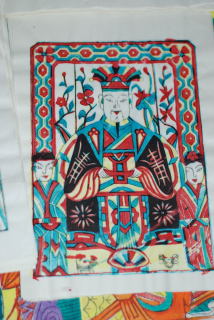 Nianhua is one of the most popular types of Chinese folk art. Under the feudal rule in the past, it was employed as a vehicle to spread archaic ideas. (…) New nianhua has proven to be a beloved art medium, rich in educational value. With the Chinese Lunar New Year fast approaching – the first since the founding of the PRC – local cultural and educational organizations should look upon the development and spreading of nianhua as one of their most essential tasks during this New Year’s propaganda activities.”
Nianhua is one of the most popular types of Chinese folk art. Under the feudal rule in the past, it was employed as a vehicle to spread archaic ideas. (…) New nianhua has proven to be a beloved art medium, rich in educational value. With the Chinese Lunar New Year fast approaching – the first since the founding of the PRC – local cultural and educational organizations should look upon the development and spreading of nianhua as one of their most essential tasks during this New Year’s propaganda activities.”The Ministry of Culture’s decree goes on to describe the subjects and values the new Nianhua should transmit, and the methods to be undertaken by government officials to ensure the widespread success of this cultural takeover:
“The new prints should convey the following messages: the grand victory of the Chinese people’s war for liberation and the people’s great revolution, the establishment of the People’s Republic, the Common Program and the recovery and progress of industrial and agricultural production. To launch a widespread nianhua movement, regional cultural and education agencies, and art organizations, should mobilize artists to produce new prints, letting them known that this is an important artistic undertaking with wide impact. We oppose those artists who tend to belittle the task of popularization. Moreover, we should work with those who engage in the old nianhua trade and cooperate with folk artists, providing them with new sketches, reforming them and through them reaching a wide audience.”
(source: Chang-Tai Hung. Comparative Studies in Society and History, Vol. 42, No. 4 (Oct., 2000), pp. 770-810 “Repainting China: New Year Prints (Nianhua) and Peasant Resistance in the Early Years of the People's Republic”)
Artisans carrying on the tradition of the Nianhua were soon to become bearers of a heavy political responsibility, which often came with violent enforcement.
Although Muban Nianhua were produced throughout rural China, Fengxiang County was one of the country’s ten most famous Muban Nianhua craft centers. Inaccessible on rainy days and hidden in the hills north of the Wei River, Fengxiang County remained isolated for much of the past century. This remoteness preserved Fengxiang Muban Nianhua’s traditional gestures, sheltering them momentarily from the influence of peripheral esthetic changes. However, like in the most remote and isolated mountain villages, the idealism and propaganda genius of the Communist Party came to bid a liberating and heavy-handed hello.
In Fengxiang, the thick and heavy carved wooden boards used to make the prints barely survived the axes and fires of the Revolution, while the thin paper prints of the gods and goddesses did not resist the elements of time and seasons. What remains today of hand-crafted Muban Nian Hua are fragile relics of culture and ancient celebrations.
Histories are to be Told
Just four miles east of the Fengxiang County Center, Nan Xiao Li Cun was the epicenter of Shaanxi’s Muban Nianhua tradition. This wood-printing folk art first appeared in the Tang dynasty, but developed rapidly under the patronage of the Ming – who were eager to use this folk medium to spread support for their rule and demonstrate their ancient beliefs. In Fengxiang, the Nianhua were produced in six different varieties, including: Door Gods (Men Hua, Men Shen), The Ten Beauties (Shimei Hua), Opera Stories (Xiju Gushi Hua), Pictures of Customs and Traditions (Fengsu Hua), Six Gods (Liu Shen Hua), and Window Pictures (Chuang Hua Hua). Sold every year at the time of the Spring Festival, Nianhua were used to decorate homes and perform essential family rituals. Pasted above the stove, in the manger, the pig sty, on the well, in a home’s entrance, they served to appease the different gods whose moods and powers could affect the destiny of a household.
In the early 20th century, a dozen family workshops in Nan Xiao Li Cun worked prolifically to produce more than 600,000 Nianhua prints each year for Shaanxi and the surrounding provinces of Gansu, Ningxia and Qinghai. The Nianhua were deeply anchored in the superstition and religious practices of the Shaanxi countryside. The Nianhua tradition was so popular that from 1958 to 1964, despite difficult economic times when even paper was impossible to find, the village continued to print the Nianhua on paper bags, student’s homework, or grocery paper. Despite the bad quality of the prints, the village workshops worked night and day to satisfy the demand. They were sold out each year.

Mr. Tai Li Ping has just come home from a celebratory lunch for the approaching New Year and his breath smells slightly of Bai Jiu. His face is open and calm, with only some wrinkles around his eyes to divulge his battles and years of crusade to save the Nianhua. Tai Li Ping talks openly, without holding back. We sip tea and talk quietly while his daughter works by the window facing the southern sun.
Tai Li Ping’s life has been marked by the destruction and violence endured by the Nianhua and his struggle to reverse the noxious effects of destructive histories. He has dedicated his life to fight the double desertion of the Cultural Revolution and globalization and has strived to passionately revive and restore Fengxiang’s Nianhua tradition. Fighting for access to previously stolen carved boards, researching old pictures and prints he is slowly restoring and re-carving the traditions of his ancestors, and reviving one of the key gestures of China’s most important festival.
Histories are Lives
As Nan Xiao Li Cun’s most renowned Muban Nianhua makers, Tai Li Ping’s family was branded as “intellectual” during the Cultural Revolution and their house raided 17 times. The prolific artistic work of his grandfather – who not only made Muban Nianhua, but also painted temple walls and carved shadow puppets were all destroyed. The cultural armies stole over 167 of the carved wooden boards from his family’s workshop, and a total of about 400 from the village. Despite constant harassment and thievery the Tai family continued to make Nianhua according to the new dictates of the revolution. These revolutionary prints were extremely popular - everyone had to prove that they were more fervent than others – and the market for communist Nianhua flourished.
In 1979, with the start of China’s reform, the government declared an end to the chaos, the return of stolen property and the revival of ancient beliefs and traditions. Everything that had been stolen was to be returned to their rightful owners. Everything that had been burnt to ashes was meant to rise again. Although the traditional Muban Nianhua styles were already crippled and maimed, Fengxiang’s Muban Nianhua market was economically viable when the reforms finally came. China’s lunge into the world market and the pull of digital printing and globalization however would give the Muban Nianhua the decisive and deathly blow. No matter the agility of the master’s hands – the hand printed Nianhua were no match for the efficiency and speed of computer printing presses.
In the early 1980’s there were still 70 families in Nan Xiao Li Cun making Nianhua. In 2000, there were suddenly only 30 families struggling to profit from the craft, and by the end of 2001 only 3 families remained. Today, Mr. Tai Li Ping is the only remaining craftsmen still carving and printing the Muban Nianhua. Mr. Tai Li Ping’s wife is also versed in the craft of printing. Their daughter is the first woman in 18 generations of Muban Nianhua makers to both carve and print Nianhua. Like Ni Su, the clay figurines in Liu Ying, the carving and printing of the Nianhua were family secrets: family secrets to be kept by the men in the blood line. If the craft was taught to a girl, when married she would inevitably bring this knowledge to another family who could potentially compete for business. To keep the specialized knowledge in the family, women were kept in the dark about most of the production process, and were able to help only in final printing steps. Confronted with the potential extinction of Fengxiang’s Muban Nianhua, however, Tai Li Ping had no choice but to teach his craft to his daughter – who unlike his eldest son – was interested in the craft. Sometimes saving traditions comes with quiet revolutions.
Two students are also learning the craft with Mr. Tai, studying on weekends and vacations. The students sit curved over their wooden boards attentively carving and chipping the boards, while Mr. Tai occasionally looks over their shoulders with comments and advice.
Together, the three Tai’s have revived 320 of the most traditional Muban Nianhua prints and designs, which represent more than 2,000 woodcuts – each character having several woodcuts – one for the black outline of the character and one for each color added to the print (tao se). This masterwork of revival and rebirth is the result of a bitter battle Mr. Tai has fought for almost 30 years, collecting old boards, researching older prints and battling with the Fengxiang Wenhua Guan, Cultural Association, to return the 167 wooden boards stolen from his family.
Fighting the Fengxiang Wenhuaguan, he soon discovered was a deceptive battle of decadence and lies that could never be won. Mr. Tai found himself confronted with the double hypocrisy of bureaucracy and corruption. His family’s boards were being sold by the Cultural Association or given as gifts to high government officials as the faked proof of Fengxiang’s great artistic renewal. The wooden boards, the only templates left of the traditional pictures, were being liquidated by the same people who were supposed to be rebuilding and reviving the Nianhua. The Cultural Association was receiving large budgets to revive local crafts, but instead of applying themselves in this work they were using the booty of the Cultural Revolution to further enrich themselves and buy-off criticism from higher-ups in the government. Tai Li Ping had no chance to regain possession of his family’s boards. Instead one day, with the help of researchers from Xian’s Academy of Fine Arts, he was able to spend several days in the Cultural Association’s storage room making copies of the boards that once colored his family’s home.
From 1980 to 1986 he used these precious printed copies to carve new boards: carving, with the help of his daughter and students the more than 2,000 wooden boards to revive 320 of Fengxiang county’s traditional Muban Nianhua prints and designs.
This is Tai Li Ping’s life work; a passionate homage to the 16 generations of Muban Nianhua carvers that came before him, a reverence to the traditions of the past. With the close collaboration of his wife, he has compiled this extensive work into a hand-printed, hand-bound four volume encyclopedia of Fengxiang Muban Nianhua. Published in 1,000 examples, it is not only testimony to the rich traditions of his country and the traditional craft of his village huddled among Shaanxi’s northwestern mountains, but is also a daring bold printed trace of his own life story.
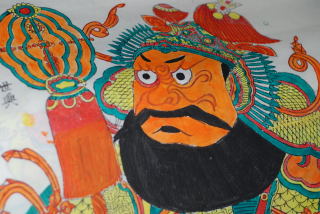





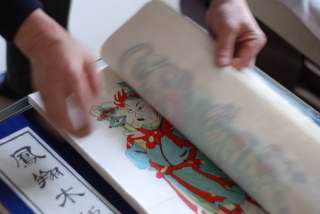


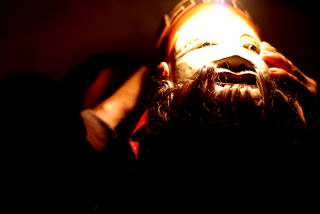

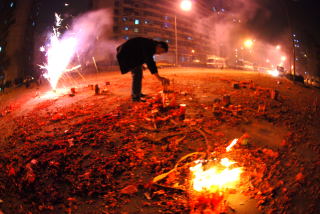
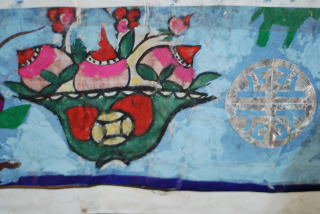

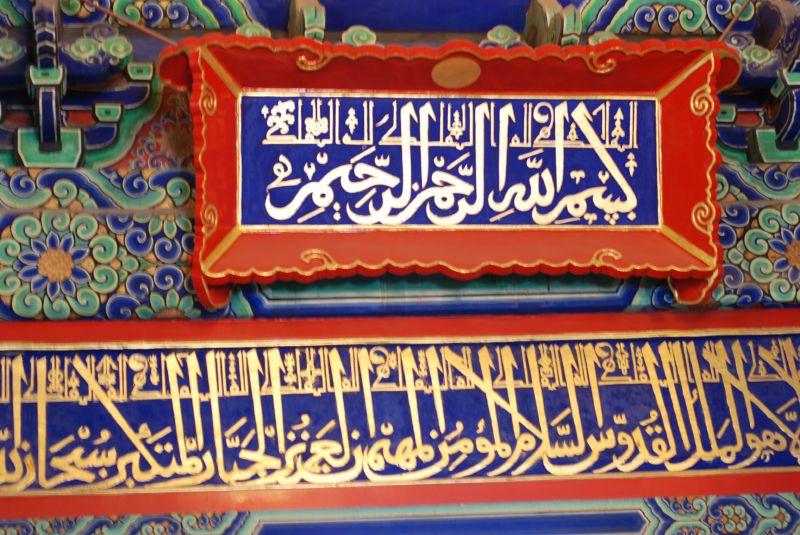


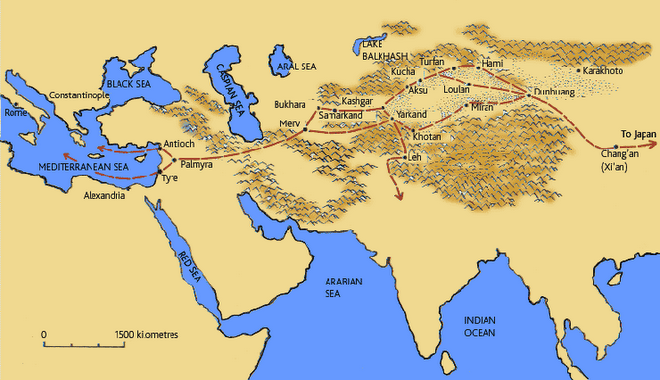
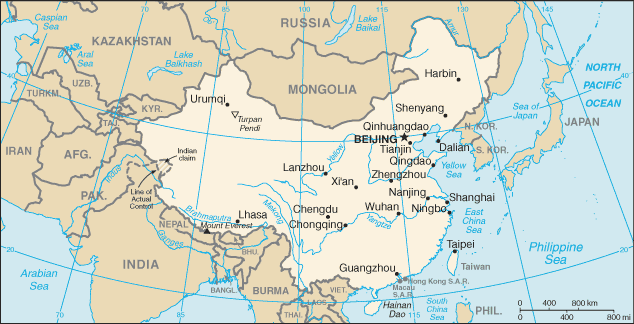

No comments:
Post a Comment